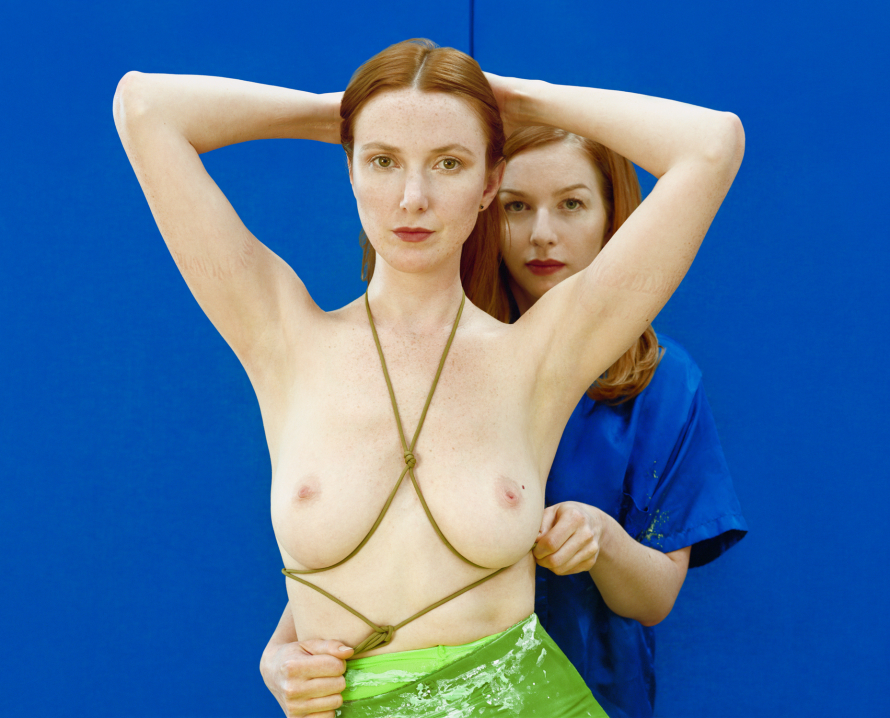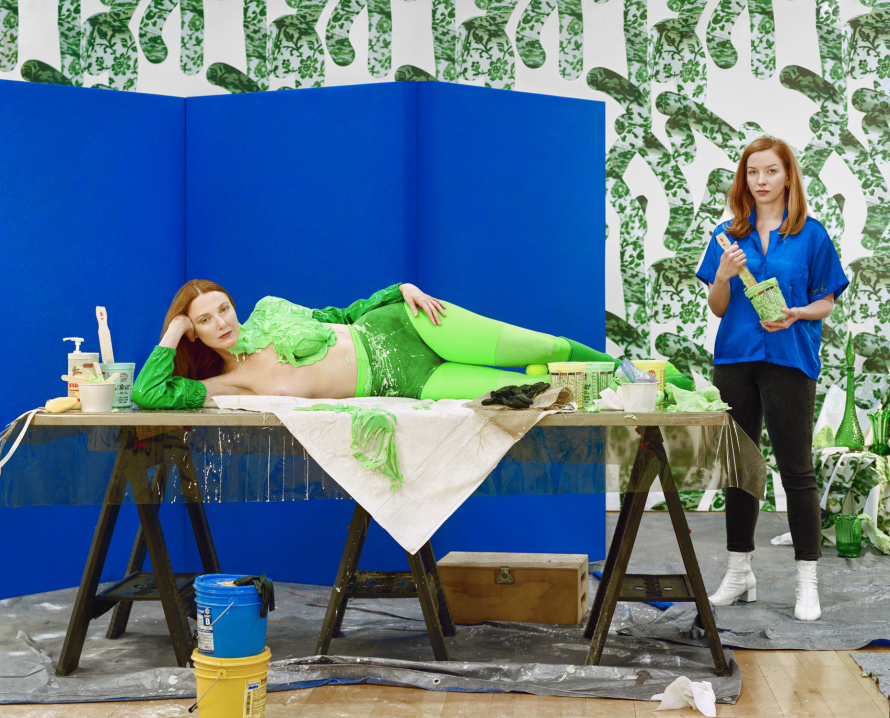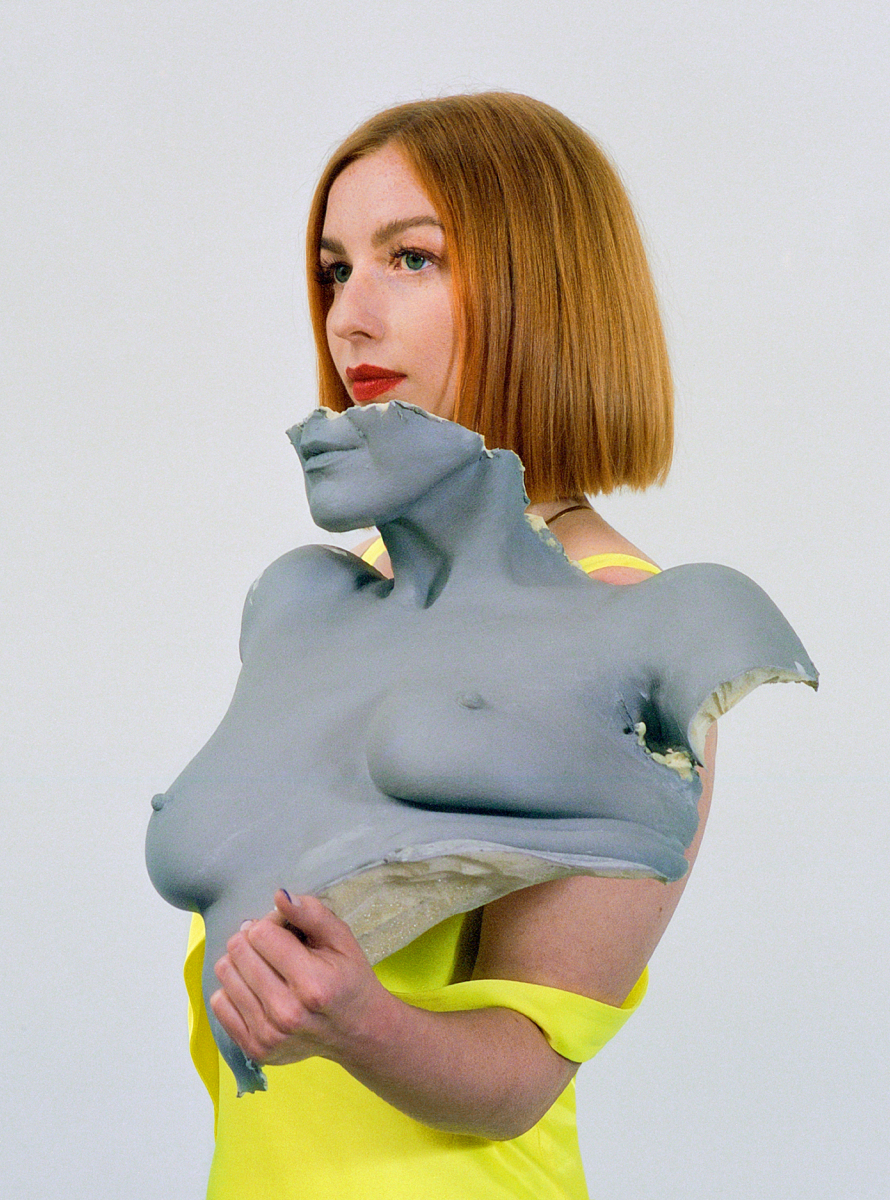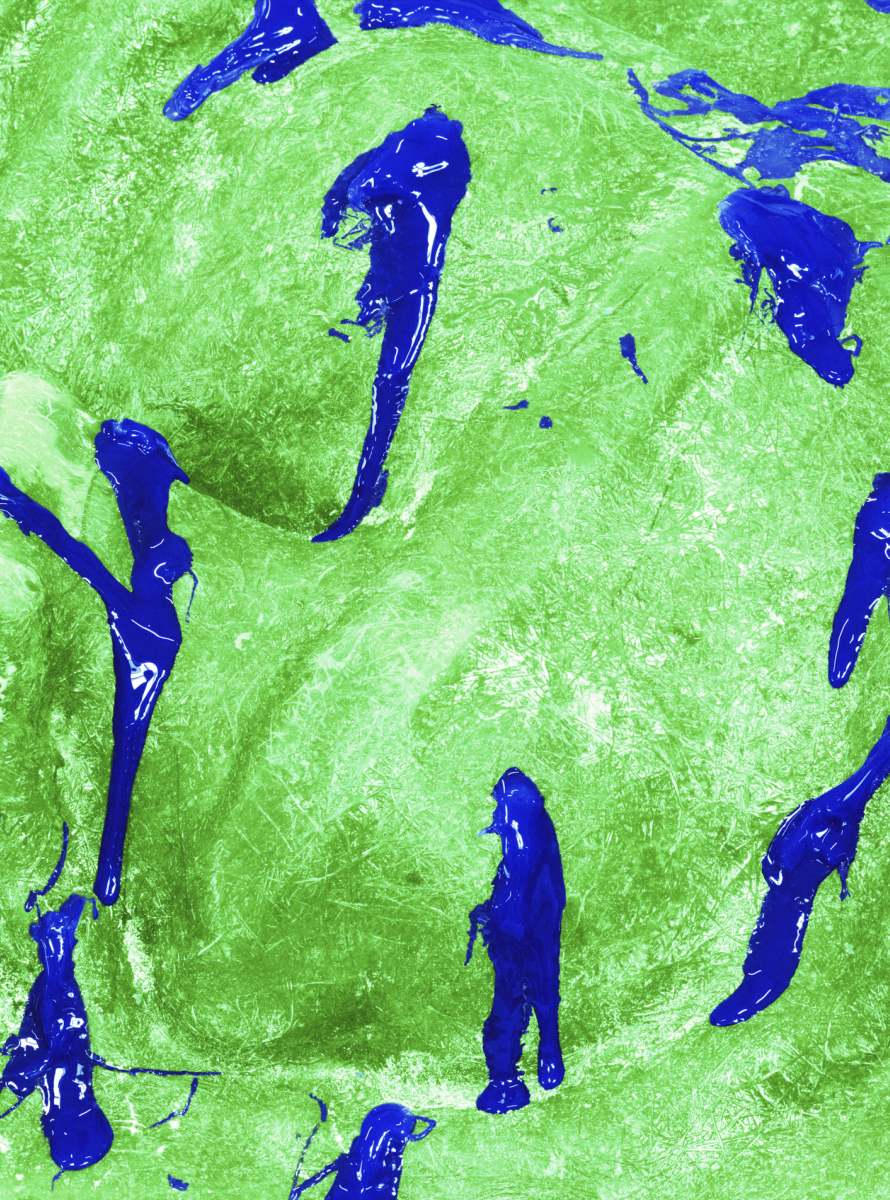
There is a simultaneous nonchalance and sternness on their faces. The subjects—artist Ilona Szwarc and her model, Talia Shvedova—address the camera head-on; steady, assured, knowing. Together, they assert the process that they undertake, to cast Talia’s breasts and torso, and complete it, clinically. This complicated power dynamic, revealed both within Szwarc’s photographs and surfacing between the viewer and the artwork, is expressed in "Virgin Soap," the artist’s debut solo exhibition with Diane Rosenstein Gallery through October 9.
“'Virgin Soap' demonstrates objectification, but somehow I feel like in this process I have reclaimed my own body and wrested it from others’ gaze,” explains the artist. Process is something we delved into in our interview with Szwarc, who refers to the studio as her “safe space,” and shares the research method that allows her to develop a concise, narrative shot list. This surgical approach becomes evermore clear in roving over the precise placement of silicone, tennis balls, hands and color throughout her series of striking tableaus.

You’re an artist who works with photography, installation and sculpture. How would you describe your fascinations at this point in time?
Ilona Szwarc: I’m fascinated with world-building. I am always looking for ways in which I can achieve that from one body of work to another, whether in the studio, or on location, whether working conceptually or in a more narrative style.
What does your process look like from top to bottom—are you alone in the studio, what materials are you using, how do you know a piece is finished?
IS: The studio is my safe space. I often relate the feeling of being here to how it felt to live in my childhood bedroom at my parents’ house. It’s the world that I have created for myself and my practice. I love my everyday, alone, quiet and focused time here. Most of my daily activities involve research, reading and a problem solving approach to different aspects of the project I’m working on. Once I move into the production phase, I might not even be at the studio, making work elsewhere; or if I am here, I’d have a crew of assistants and collaborators around.
However nothing feels more finite than having a show, or a publication. This is truly the only thing that makes a body of work complete as all aspects of it have been realized and produced.

What aspect of your practice do people connect most to? What would you really like people to know about what you do?
IS: Since the majority of the narrative is told through photography, I feel like people relate to it very easily, as its vocabulary is commonly known. I pull from other types of imagery like tutorial aesthetics, medical illustrations or editorial photography, which the viewers might also be able to quickly recognize and therefore have an entry point to the work. Another point of connection is the experience of being a woman, being looked at and objectified. Ultimately my story is one of displacement and trying to belong.
When did you have the idea for "Virgin Soap," and how did you begin your research for that body (pun intended!) of work? What did your research look like for the show—what were you reading, who were you listening to, where were you working (LA, elsewhere), and what made it all gel for you?
IS: For each body of work, I start by creating a master document, in which I put all my reference images, excerpts from texts that inspire me, and my own writing. From there, I narrow down and work up to creating a shot list. This helps me communicate my ideas with my models and crew, and also helps me clarify what I want to achieve. I was in LA during that process, and the whole body of work was shot in my studio space.
Did you have any revelations while creating the work for "Virgin Soap?" While working with this hired doppelganger and casting breasts with silicone?
IS: Each body of work is very personal to me—I am physically in the photographs, I invite models that I think share my appearance, and that I deeply relate to. I realized that by creating this object—this cast of a woman’s breasts and torso—I am putting myself through an abstract experiment in reproduction, creating another one of our type. "Virgin Soap" demonstrates objectification, but somehow I feel like in this process I have reclaimed my own body and wrested it from others’ gaze.

What techniques did you learn from this process that you’ll take forward with you?
IS: I’ve learned so much over the course of working on "Virgin Soap!" From wallpaper design techniques, to working with silicone, and all around improving photographic technology that I use in my studio. I am most excited about the new panoramic format I’ve been experimenting with. It’s a panoramic back for my large format camera that produces a single panoramic photograph. I’ve arrived at this format wanting to replicate the sequential photographs I’ve been making. The panoramas interest me both conceptually and formally, they’re challenging and exciting to compose.
Where is this work taking you next; what subjects, objects, etc are you itching to explore now, conceptually and materially?
IS: The project I am itching to start working on takes up seasonal color analysis in the fashion and cosmetic industry developed in the 1980s. It is a process of finding colors and clothing and makeup to match a person's skin complexion, eye color and hair color to best accentuate their features.
Tangibly, what’s next on the Ilona Szwarc Horizon? What do you have planned for the rest of 2021 and into 2022?
IS: Right now I am very focused on the show that opens September 4th and right after that happens, I am going to Fountainhead Residency in Miami. I am looking forward to making new work and having the time away to get started on this process.
Craving more culture? Sign up to receive the Cultured newsletter, a biweekly guide to what’s new and what’s next in art, architecture, design and more.










 in your life?
in your life?

